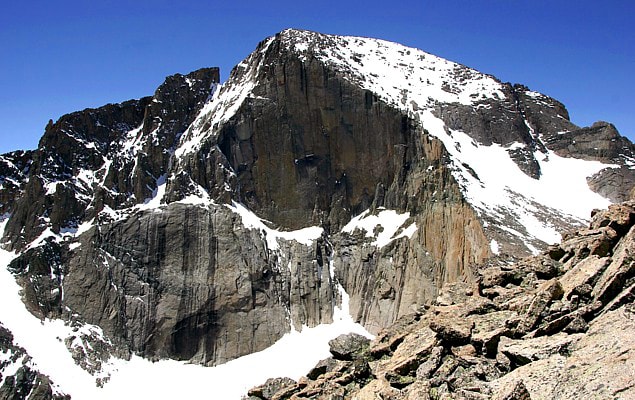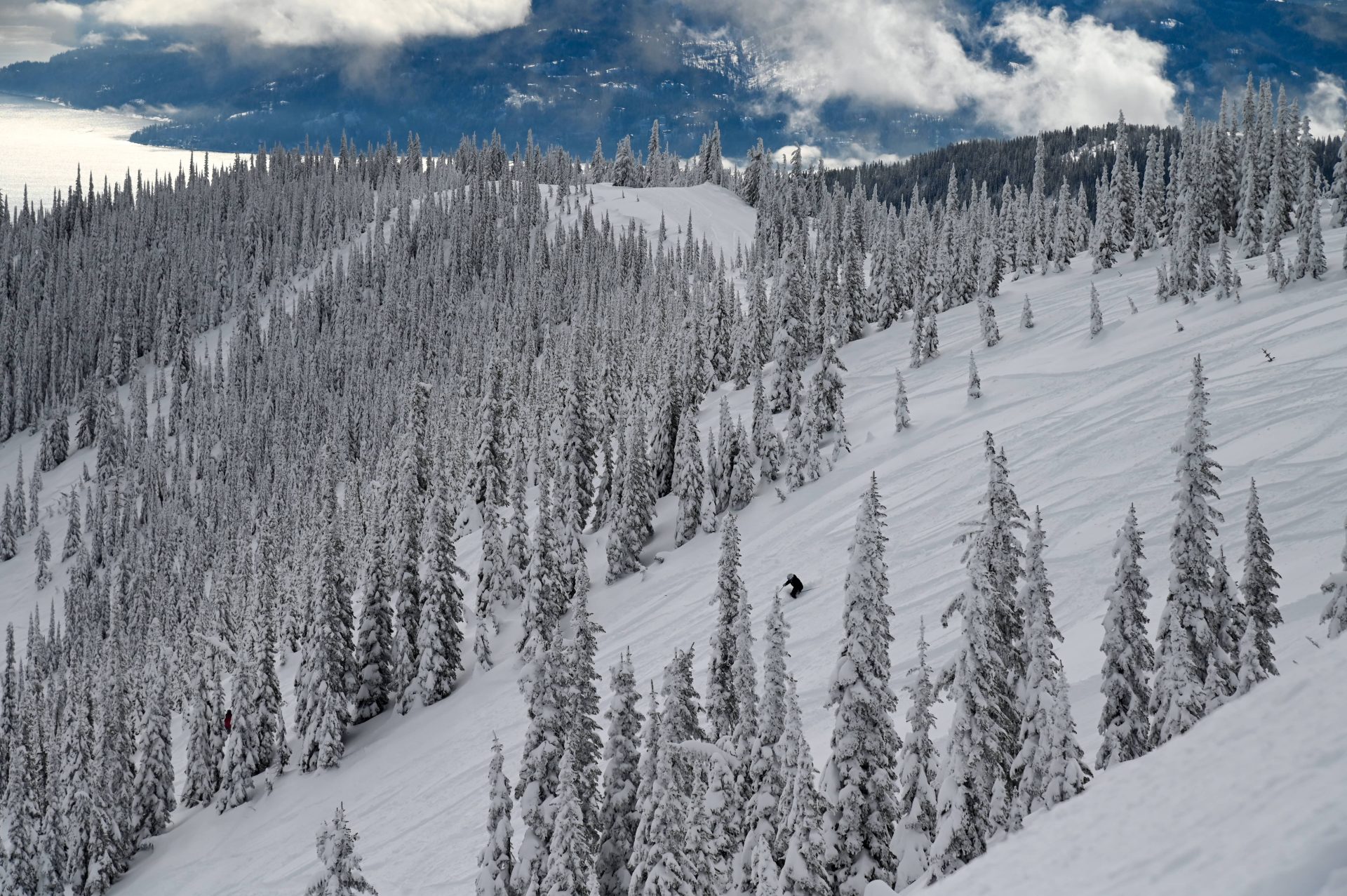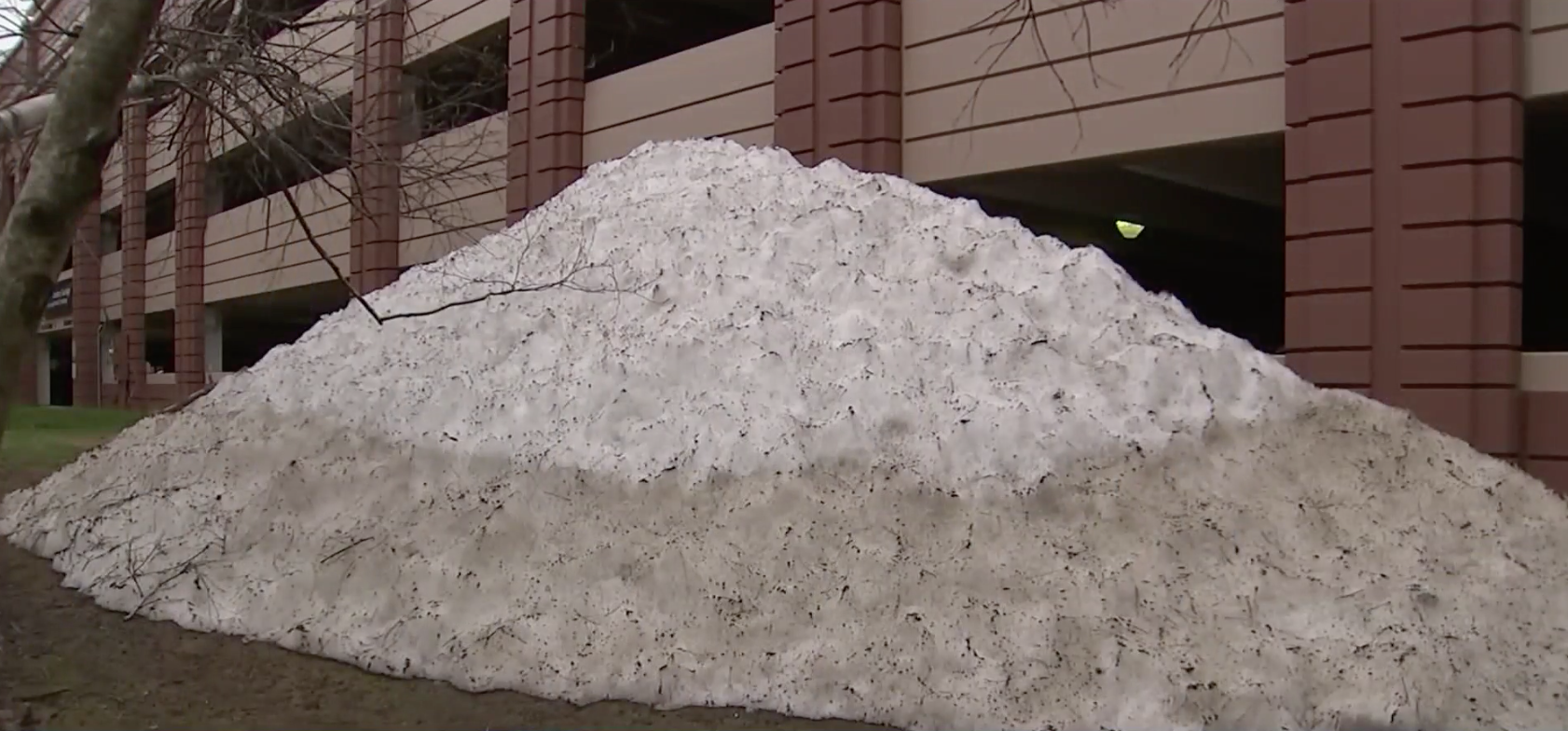
Remains found by searchers in Rocky Mountain Park on Friday are believed to be those of missing Air Force Academy Prep School Cadet Micah Tice, who went missing in November, park officials said Friday. Tice, 20 was attempting to climb 14,259-foot-high Longs Peak.
On Thursday, searchers affiliated with the Tice family told park staff that they found items believed to belong to Tice below treeline in the Boulder Brook drainage, park spokesman Kyle Patterson said in a release. According to the park statement, the Boulder Brook drainage was one of the areas where initial search efforts were heavily focused but remained covered by deep snow through the winter and spring. The search was suspended in December after park officials cited “very few clues” and “harsh winter conditions.”

Tice was last seen by two other park visitors between 7:30 and 8 am on Nov. 24 just above treeline, in blizzard conditions. They said the weather was terrible at the trailhead and that visibility and conditions continued to worsen. Tice, they said, was wearing only a sweatshirt and sweatpants, a hat, lightweight gloves, and tennis shoes. They told park officials that they tried unsuccessfully to dissuade him from climbing Longs Park. Tice apparently did not let anyone know about his plans, park officials said.
After the search was called off in December, Tice’s parents held a news conference during which they accused the park service of abandoning their son despite there being the possibility of his having found shelter and still being alive, reports OutThereColorado. The family’s accusations prompted the agency to defend its search efforts. In Friday’s release, the park service detailed the following:
• At sunrise, Tuesday, Nov. 27, three days after he was last seen, active search efforts began in the Longs Peak area of Rocky Mountain National Park for Tice. A Colorado Air National Guard Blackhawk helicopter attempted to assist with aviation operations on Tuesday but was curtailed due to 90+ mph winds.
• Longs Peak is the park’s highest peak at 14,259 feet in elevation. In late fall through early summer, Longs Peak is an extreme ascent requiring advanced winter mountaineering skills. Conditions on Nov. 24 in the area were severe, including significant snow accumulation, extremely high winds, blizzard conditions, and bitterly cold temperatures.
• Over an intensive search period, ground and aerial searchers covered an approximate 10 square mile search area. These efforts were focused on sections of the Longs Peak Trail, the East Longs Peak Trail, the Battle Mountain area, Granite Pass, Jim’s Grove, the Boulder Field, Mount Lady Washington, Chasm Lake, Peacock Pool, the Boulder Brook drainage, the Storm Pass Trail, and the Wind River drainage. On Sunday, December 2, the first day conditions were conducive to flying this area, search managers assigned aerial searchers from the Colorado Air National Guard to perform reconnaissance of the entire Keyhole Route to the summit of Longs Peak.
• Additional military coordination included cellphone forensic analysis. The cellphone data was requested early in the investigation and received on Thursday, Nov. 29. Cellphone data provided broad areas of potential transactions but was vague information given the limitations of the signal in that area. These transactions were not “pings” nor texts nor phone calls. This information indicated Tice’s cellphone was picking up a signal early Sunday morning, Nov. 25. The large, broad area referenced in the analysis was part of where search efforts were conducted.
• Beginning Friday morning, Dec. 7, through Sunday, Dec. 9 search activities for Micah Tice were focused from the Granite Pass area to the northern lower slopes of Longs Peak, including the Wind River and Boulder Brook drainages. On Monday, Dec. 10, due to conducive weather conditions at high elevations on Longs Peak, teams focused their efforts on the Keyhole Route to the summit of Longs Peak as well as the Chasm Lake area, Clark’s Arrow and the Loft. On Tuesday, Dec. 11, searchers again focused efforts in the Wind River drainage.
• Searchers experienced chest deep snow, thick snow covered forests, and vast areas of dead and down trees, especially in drainages away from snow packed trails. At higher elevations, winds scoured the landscape leaving it bare or depositing deep drifted snow. Those conditions existed from the first day of search operations and can cover or erase clues. Depending on the search area and day, team members encountered harsh winter conditions including extreme winds, low visibility, bitter wind chills, below freezing temperatures, deep snow, and high avalanche danger.
• The park has worked closely with the Air Force Academy since the beginning of this incident, coordinating investigative and operational assistance, and incorporating a team from the Air Force Academy Mountaineering Club in initial search efforts.




